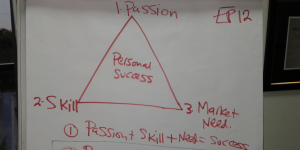Lent is a season of introspection, a time of taking personal inventory and self-examination. These six weeks, set aside each year by the Church provides an annual opportunity for spiritual cleansing. Lent is an invitation to recognize failures and sinfulness, to seek forgiveness and to form a new resolve in order to grow deeper in faith, fervent love and firm hope. In this holy season, the Church invites us to turn our gaze to God.
First reading: Genesis 9:8–15
Genesis 9:12-15 explains the origin of the rainbow as a sort of divine memo hanging colourfully across the sky reminding us of God’s covenant with Noah. As a phenomenon of nature, the rainbow appeared after the floodwaters had receded; it reappeared thereafter, following rainfall, as a sign that the earth would never again be destroyed by the flood. This narrative is remarkably similar to the Babylonian Epic of Gilgamesh. The story’s protagonist Gilgamesh is portrayed as searching for immortality. On his way, he finds an ancient ancestor Utnapishtim who relates the story of how he had become immortal. According to the story, the council of the gods had whimsically plotted to destroy humankind by the flood. Ea, the god of wisdom warned Utnapishtim to build a boat to save his family. After the storm, the boat came to rest safely on a mountain and birds were sent forth to see if the waters had ceased.
This being the case, Utnapishtim offered sacrifices to the gods who, in turn, rewarded him with life. When Genesis authors narrate the flood story it features only one God who uses the flood not as a result of capriciousness but a divine punishment for sin. Rather than immortality, Noah is granted a covenantal relationship with God. This periscope, therefore, confirms that it is humans who corrupt creation and unleash destabilizing forces within it. Instead, preservation of creation and stability of life lies in the custody of the Creator. These gifts are guaranteed when human beings respect the living space provided by God. Today, we are reminded that we are sharers and beneficiaries of that living space but also responsible stewards of creation who should not corrupt or squander its riches.
Second reading 1Peter 3:18–22
Christian architects in medieval Europe were fond of designing baptismal fonts in the shape of an ark because they, like1Peter, regarded Noah’s ark as a type of the Church. From early centuries Christians recognized a double typology between Noah’s narrative and baptism. Saved ‘through the water’ meant that as Noah escaped the fury of the flood; the baptismal waters would save believers. Written near the end of the first Christian century, 1Peter addressed the largely gentile Christian Churches in the rural Roman provinces in Asia Minor. This Epistle is one of the seven letters known as Pastoral letters because they were not sent to a specific community but to all believers. 1Peter is most probably a baptismal homily with catechetical lesson parts based on early Christological hymn cf. 1Peter 3-4:11.
In addition to Christian baptism, 1Peter affirms the efficaciousness of the saving death and resurrection of Jesus in which believers participate through baptism. Christ’s triumph over sin and death presents victory over Satan and powers of evil. In the realm of the spirit; meaning, in his risen state, Christ “went to preach to the spirits in prison” 1Peter 3:19. This is not the same as ‘descent into hell’ as in the Apostles’ Creed; instead in the process of being raised, Christ declared victory to the imprisoned spirits which were believed to inhabit in the unknown. In other words, it was in the triumph of going ‘up to heaven’ and not ‘down to hell’ that Christ spread the good news that sin, death and the power of evil had been forever disarmed.
Gospel: Mark 1:12–15
Three trio words that dictate the atmosphere of Lent appear in this first Christian Gospel, namely reform, repent and believe. These trio words set the tenor of life for the disciple of Jesus as a two-line summary of what any gospel would be about. This editorial faith comment syntheses Jesus’ person and purpose in a simple way. Mark makes a clear description that after his baptism the Spirit drove Jesus into the wilderness. Drove is a harsh word that has been translated elsewhere to mean thrust. When we read in combination with the adverb immediately cf. Mark 1:12, it becomes clear that the battle between good and evil had already erupted. Jesus in his baptism was anointed and empowered with the Spirit and fully equipped for the task at hand he shoved immediately into battle. Through the period of testing, his power was affirmed once and for all. The struggle between good and evil was fully played out and at the end complete victory would be celebrated on the cross declaring ultimate defeat over sin and death.
Satan is mentioned in Mark 1:13 for the first time as an adversary. The development of the concept of Satan is quite interesting. In the Holy Bible, the word was first used to mean human opponents. The Philistines called David a satan cf. 1Samuel 29:4; David regarded Abishai as his satan cf. 2 Samuel 19:23; Solomon praised God that he had no satan left to oppose him cf.1Kings 5:4. Gradually, satan was used to describe someone who prosecutes a case against another as in Job 1:6-7, or someone who accuses others before God, as in Job 2:2 and Zechariah 3:2. The other title for Satan is devil, from the Greek, diabolos which mean slanderer; one who accuses another deliberately and maliciously. Nevertheless depending on whatever source; Satan is an adversary of humankind. The New Testament presents Satan as one who is responsible for disease and suffering cf. Luke 13:16. Satan seduced Judas cf. Luke 22:3. The same devil was confronted by the words and works of Jesus cf. Luke 10:1-19. St Peter recommends believers to fight against this force and defeat it cf.1Peter 5:8-9. Satan represents power against God and is destined for final destruction cf. Matthew 25:41.
Mark’s reference to Jesus being among the wild beasts points to the danger of the situation; leopards, wild boars and jackals that inhabited the Judean desert cf. Mark 1:13. Underneath, St. Mark wished his audience to remember the promises of the messianic age as a time of harmony between humanity and nature as portrayed by Isaiah 11:6-9. Like the Israelites in their desert trek and like Elijah in the wilderness, Angel messengers from God sustained Jesus. But, unlike the Israelites who gave into temptation, complained against God and sinned in the desert, Jesus emerged obedient and faithful to continue the task of proclaiming the reign of God. Today we are encouraged to imitate Jesus at our time of mortification so that we can be victorious. Lenten season is time to reform, repent and believe. We are invited to begin this season turning away from evil so that God can reward us with faith and fervor.
Application
Today we are reminded that we are a people of the covenant in which like Noah we have an active part to play. By the grace received through the waters of baptism we have been redeemed, so we have to sustain this grace by behaving appropriately. Baptism is our sure way to salvation in which we have to invite others to participate. We have no shortcut to heaven apart from passing through Jesus Christ by repenting our sins. Though temptations are many and rampant, Jesus has taught us how to defeat them by prayer fasting and doing the will of God; we are encouraged never to lose focus of this reality. Jesus’ victory is in our favour.
Fr Paulino Mondo


